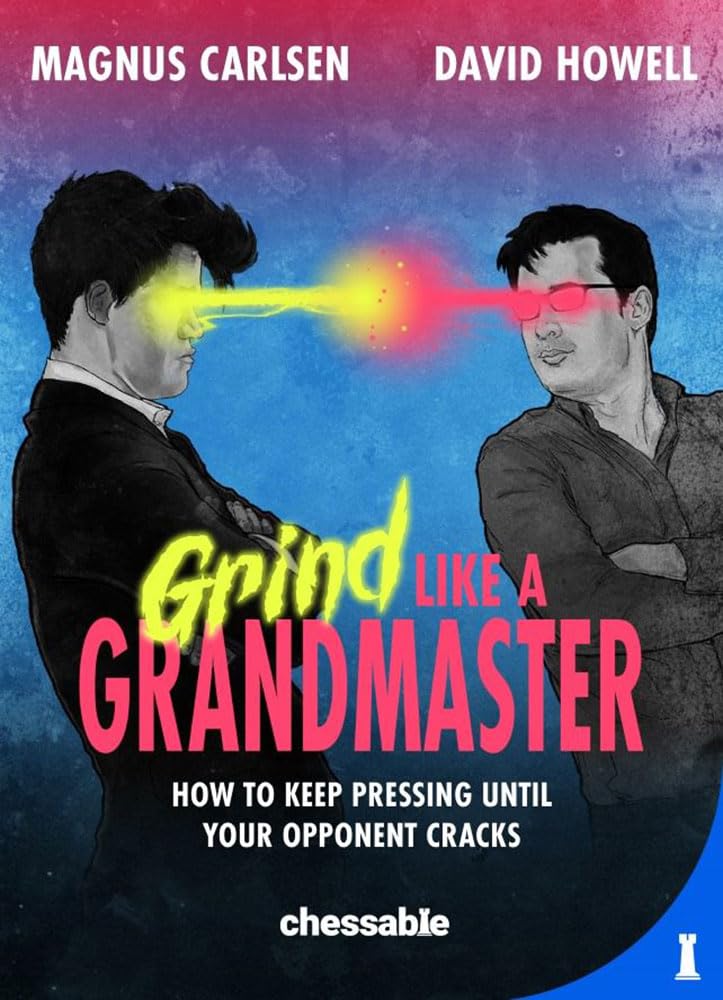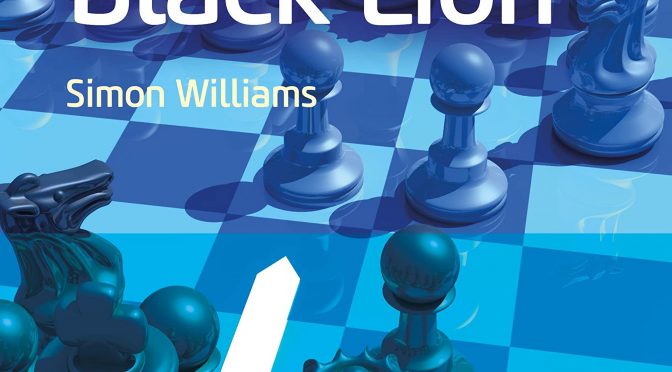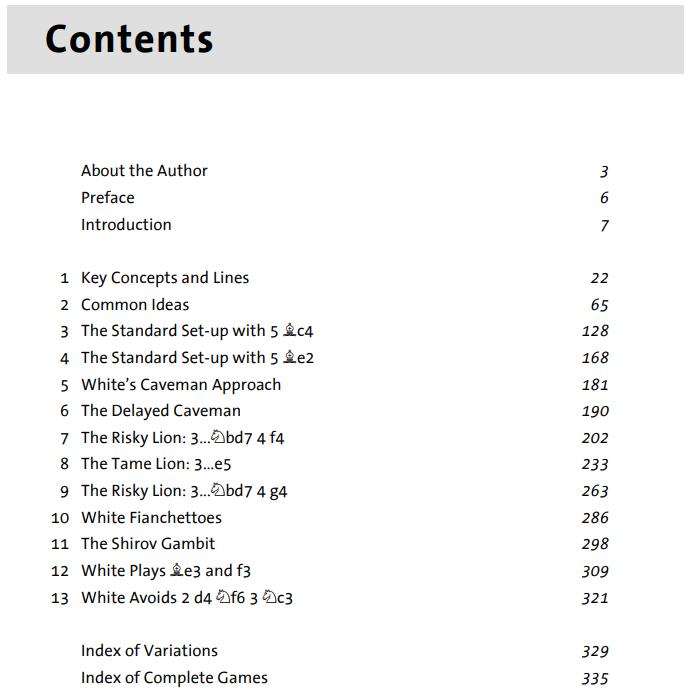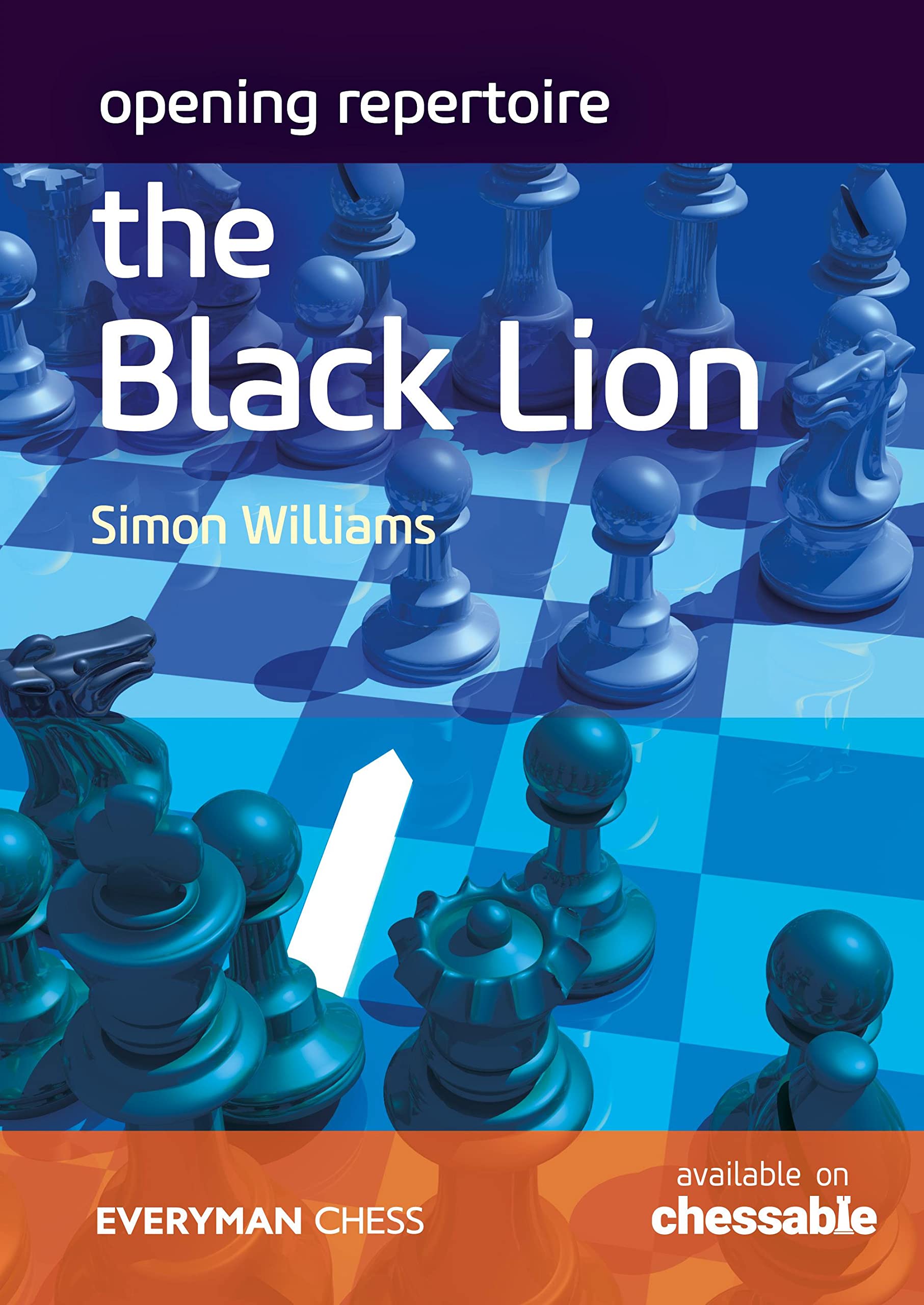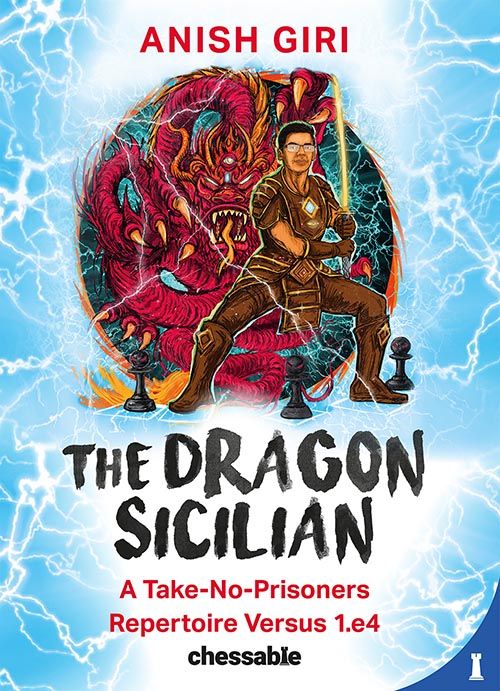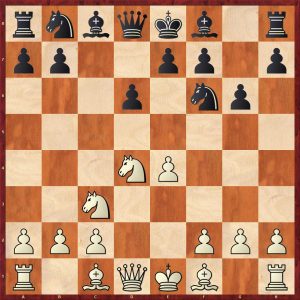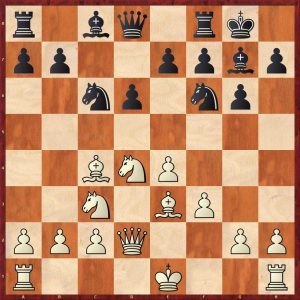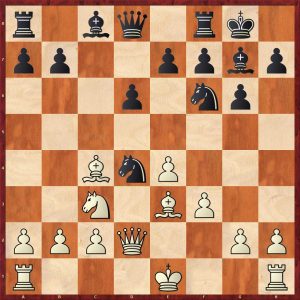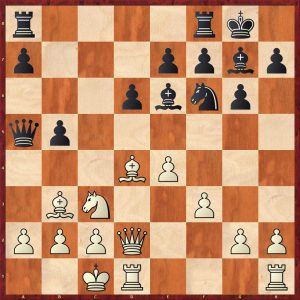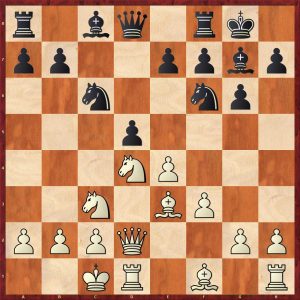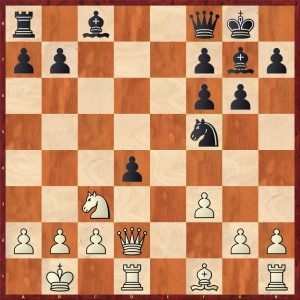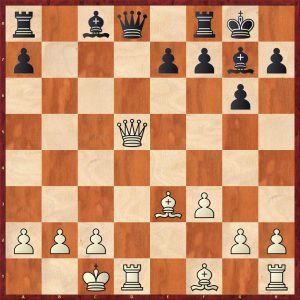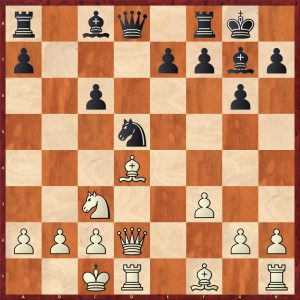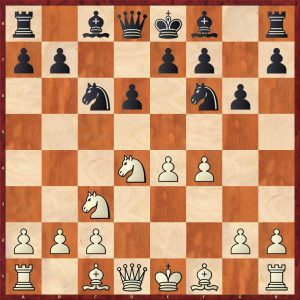From the publisher:
“It is amazing how much play you can create in a seemingly equal chess position – if you persevere. In this book, the greatest chess player of all time, Magnus Carlsen, and his friend, Grandmaster David Howell, explain how to win these kinds of chess games.
Carlsen and Howell show how you can keep a game alive, how you can keep posing problems to your opponent, how you can recognize the first small mistakes, and how you can grind your opponent down until he cracks.
New In Chess has converted this book from a popular Chessable video and MoveTrainer ® course with the help of Carlsen and Howell. The lively conversations of the two friends translate very well into a highly instructive chess manual. It is top-level chess, using grandmaster games as examples, but the insights are accessible to players of all levels.
Magnus Carlsen won the World Chess Championship in 2013 and gave up his title in 2023. He is regarded as the greatest player of all time and holds the #1 spot in the world ranking. He has read dozens of books published by New In Chess, but this is the first book with Carlsen as an author. Carlsen (1990) lives in Oslo, Norway.
David Howell is an elite chess Grandmaster with a 2700+ peak rating and an individual gold medal winner at the Olympiad. He is a well-known and popular commentator on live chess streams. Howell (1990) is two weeks older than Carlsen, was born in Eastbourne, United Kingdom, and lives in Oslo, Norway.”

David Howell, London Chess Classic, 2013, courtesy of John Upham Photography. For more about David Howell see here
This book is essentially a transcript of a Chessable course which you can find here. If you prefer book learning, or you just like the idea of having something written by Magnus Carlsen on your bookshelf you’ll be interested in this title.
David has written a two page preface:
A quick swashbuckling attack full of sacrifices may appeal to some, but a long endgame grind can lead to the same result. Arguably, while one approach is more spectacular and may ensure that games end quicker, the other approach comes with less risk attached.
Magnus provides a shorter preface:
Nothing quite compares to the thrill of pressing a minute advantage and converting it into victory. The excitement of outmanoeuvring and outlasting your opponent. The realisation that – although your first punch may not have landed – there is no need to despair. Try, try and try again. You will very often succeed.
Which are you? A hacker or a grinder? A sprinter or a marathon runner? To become a strong player, of course, you have to master both styles of play, but many will have a preference for either hacking or grinding.
Grinders require qualities such as patience and stamina as well as an outstanding knowledge of both technical and practical endings. If you’d like to become a better grinder, or even if you’d like to be better at defending against grinders, this course is for you.
It’s standard practice these days to have two commentators working together in live broadcasts, sharing ideas, asking each other questions. It’s something that usually works very well, making the broadcast more interactive, more friendly, more accessible, and, for me at least, it’s also effective in book form.
There could be no one better to demonstrate by example how to become a grinder than Magnus Carlsen, not only the highest rated human player of all time, but also a leading exponent of grinding. David Howell, also a strong grandmaster who enjoys grinding, as well as being an excellent commentator, is Magnus’s ideal partner. They are also good friends, and this is something that comes across well, adding to the enjoyment of the book.
Having said that, the contents themselves seem rather slight. Apart from the introductory material to each of the eight chapters you only get twelve games, seven played by Magnus and six played by David. If you’re good at maths you might have noticed that 7+6 is 13: one of the games is between the two authors, played in the final round of the 2002 World Under 12 Championship. It resulted, since you asked, in a draw.
This is one of Magnus’s lesser known games. He admits that it was an ‘awful game’ but still managed to grind down his lower rated opponent. Click on any move for a pop-up window.
The book is beautifully produced, although I guess the, er, colourful cover might not be to everyone’s taste. If this sort of thing bothers you, you might also think that, while a wide sans serif font is best for screens, a narrower serif font might be preferable for books.
The quality of the annotations, if you like the conversational style, is, of course, of the highest quality. At one level the games are more suited to players of, say, 2000+ strength, but some of the more general insights into the nature of grinding will be of interest and value to all players.
If you like the idea of grinding and you’d rather study the material from a book than from an interactive course or videos (or perhaps you’d like the book as well as the interactive course) it can be highly recommended.
Daniel King interviews David Howell about the book here, and if you can’t afford an hour to watch this, Daniel also provides a summary here.
You can read some sample pages from the book, which will enable you to decide whether or not it’s for you, here.
Richard James, Twickenham 14th May 2024

Book Details:
- Hardcover: 208 pages
- Publisher: New in Chess; 1st edition (31 Aug. 2023)
- Language: English
- ISBN-10:9083328465
- ISBN-13:978-9083328461
- Product Dimensions: 17.6 x 2 x 24.2 cm
Official web site of New in Chess.
